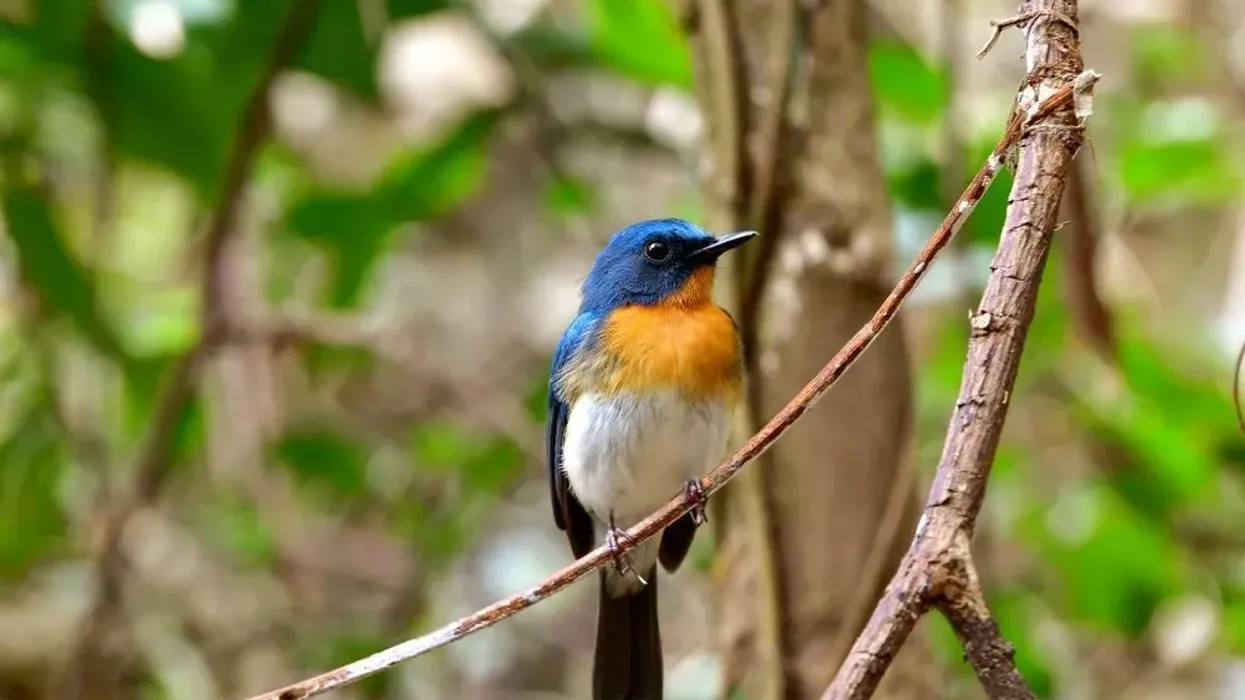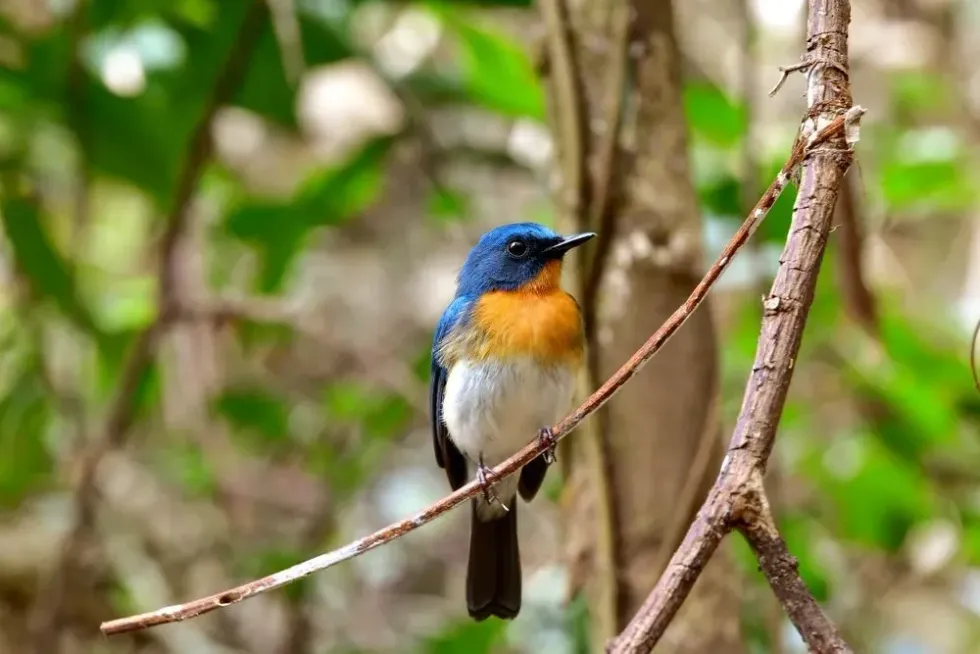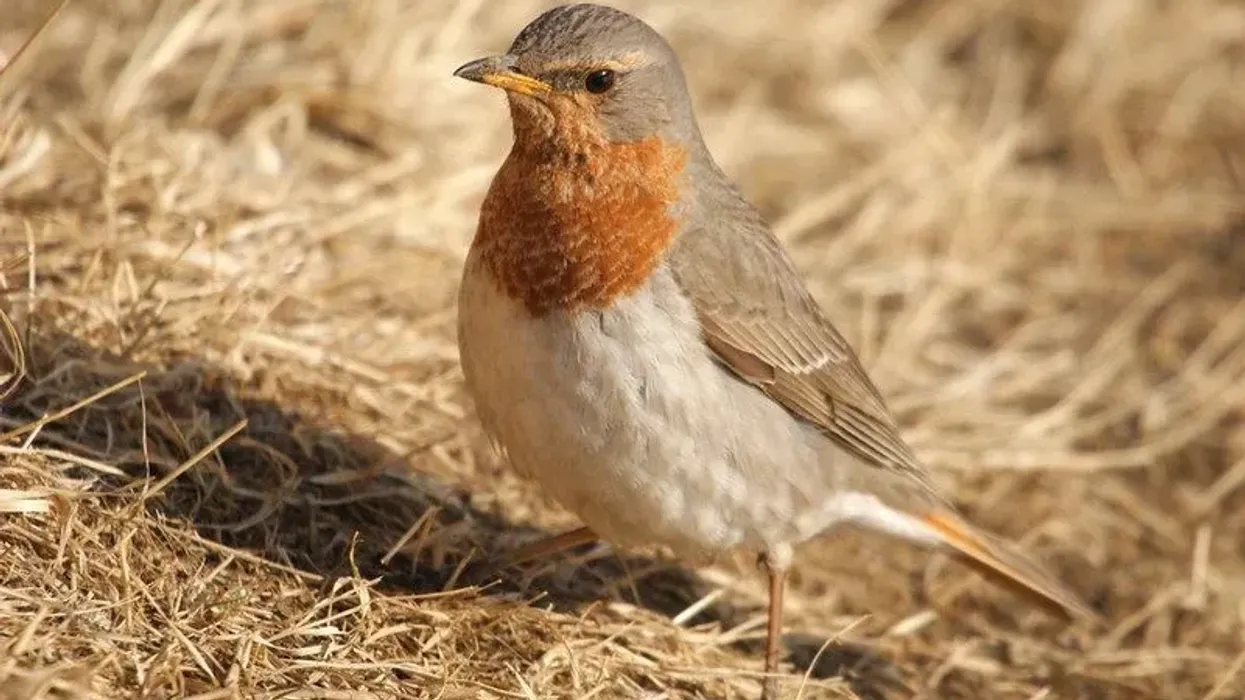Species named after Samuel Tickell residing in tropical Asia are known as Tickell's blue flycatchers. It has a blue plumage with tints of orange, white, and brown.
It has variations in its plumage and size, the bird is speculated to have a couple of subspecies. The nominal form resides in the Indian subcontinent, while the Sri Lankan species are separated as jerdoni, mesaea, or neseal as they are darker.
The range map of the bird highlights India and several southeastern countries. It was considered conspecific with the Indochinese blue flycatcher (Cyornis sumatrensis). It is an insectivore feeding primarily on insects.
It resides in open and dry forests, scrubs, and gardens. Also, currently, it is found in garbage places speculating loss of habitat.
If the uniqueness of the Tickell's blue flycatcher makes you interested to read more about similar species, you can read about ani bird and northern parula.
Tickell's Blue Flycatcher Interesting Facts
What type of animal is a Tickell's blue flycatcher?
A Tickell's blue flycatcher, Cyornis tickelliae, is a small perching bird from the flycatcher family. The bird is an insectivore breeding in tropical Asia.
Formerly, it was considered conspecific to the Indochinese blue flycatcher. The flycatcher is named after the British ornithologist Samuel Tickell. It has various has a couple of binomial or scientific names having Latin origins like Muscicapa tickelliae, Cyornis tickelli, Muscicapula tickelliae, and Cyornis tickelliae.
What class of animal does a Tickell's blue flycatcher belong to?
The Tickell's blue flycatcher (Cyornis tickelliae, Muscicapa tickelliae, Muscicapula tickelliae, and Cyornis tickelli) belongs to the kingdom Animalia, class Aves, order Passeriformes, family Muscicapidae, genus Cynornis. More specifically, the bird belongs to the flycatcher family residing in southern Asia from India, Sri Lanka, Myanmar, and China to Indonesia.
Also, the search reflected that in the past it was considered subspecies of the blue-throated blue flycatcher.
How many Tickell's blue flycatchers are there in the world?
The population of the Tickell's blue flycatcher bird is not yet quantified, while the chickens are speculated to have the largest population range up to 25.9 billion birds around the world. Also, the birds are listed as Least Concern under the IUCN Red List of Threatened Species.
Where does a Tickell's blue flycatcher live?
This bird resides in tropical Asia around India, with its range extending eastwards to Southeast Asian countries. More precisely, the bird's range map highlights India, China, Sri Lanka, Myanmar, Indonesia, and several other southern Asian countries extending eastwards to small states of southeastern countries. The bird is recorded to occasionally migrate to Chennai and southern India.
What is a Tickell's blue flycatcher's habitat?
The small perching bird is found in dense scrub, wooded regions, bamboo clumps, and canopies. It also favors open hill forests and their edges. The bird nests in tree holes or amongst rocks.
Who do Tickell's blue flycatchers live with?
These birds lead a solitary life outside their breeding season around March-April. Unlike other birds, the Tickell's blue flycatchers do not form groups or flocks. While the behavior of the birds is not recorded, the birds are speculated to prey and feed upon insects mostly during dusk.
How long does a Tickell's blue flycatcher live?
The specific life span of the bright blue species of birds has not been recorded specifically, but it often lives for more than ten years in the wild. In comparison to the button quail, the species of flycatcher is speculated to live a considerable life as the button quail is known to live for as short as 18 months.
How do they reproduce?
The breeding season of the bird differs according to the state on the map. While the Tickell's blue flycatcher breeds from March to June in Sri Lanka, the breeding season ranges from April to August in various states of India and other southeastern countries.
The upright long-tailed flycatcher usually lays three to five eggs. The Tickell's blue flycatcher male and female species nest in cavities or lawny rocks and are speculated to feed upon larger prey such as small invertebrates.
What is their conservation status?
The Tickell's blue flycatcher is listed as the Least Concern species under the IUCN Red List of threatened species. While the bird is at no major risk, it is speculated to inhabit garbage places due to the loss of favorable habitat.
Tickell's Blue Flycatcher Fun Facts
What do Tickell's blue flycatchers look like?
The species of bird portrays sexual dimorphism, the Tickell's blue flycatcher female differs from the male in plumage, size, or appearance. The subspecies also show variations in plumage and size.
It is a small songbird with blue upperparts. The throat and the breast are red-brown while the belly is white.
The male has a dark blue plumage with a red throat and breast and orange and white underparts and belly, while the female is dull. Similarly, the juvenile bird has brown upperparts, head, throat, and breast. Only the wings and tail of the juvenile are blue.
The appearance of the bird resembles the blue-throated blue flycatcher (Cyornis rubeculoides), but the blue-throated bird has a blue throat, unlike Tickell's blue flycatcher. Its physical descriptions are some of its identifiable features.

How cute are they?
The upright long-tailed flycatcher has dark blue upperparts with brightly colored throat and breast. The bird is quite colorful and considered one of the more adorable species of bird. While the bird may be rare to spot, the metallic song is occasionally heard.
How do they communicate?
The species of the birds communicate using various vocalizations. The metallic song of the birds comprises short clicks following five to six notes. It resembles the song of the spot-breasted fantail. Also, the calls of the birds include several clicking notes, 'churr churr'.
How big is a Tickell's blue flycatcher?
The species is 4.3-4.7 in (11-12 cm) long. It is twice the size of the smallest bird, a bee hummingbird.
How fast can a Tickell's blue flycatcher fly?
While the exact speed of the species is not recorded, it is speculated to fly fast but not as fast as a peregrine falcon.
How much does a Tickell's blue flycatcher weigh?
The bird weighs up to 0.2-0.3 oz (8-10 g).
What are the male and female names of the species?
The species of bird from the flycatcher family do not have names specific to their sex. In general, a female may be referred to as a hen and a male is called a rooster.
On the contrary, the bird is designated with several subspecies names. Also, the bird has a few synonyms for its binomial name: Muscicapa tickelliae, Cyornis tickelli, Muscicapula tickelliae, and Cyornis tickelliae.
What would you call a baby Tickell's blue flycatcher?
The juvenile bird hatches from the Tickell's blue flycatcher egg. The Tickell's blue flycatcher baby is also called a chick, hatching, fledging, or nestling.
What do they eat?
While the birds feed mainly during dusk, flying insects including earwigs and termites are the most common prey of the species. Occasionally, the bird gobbles up crawling insects, too.
Are they dangerous?
The bird does not possess any danger. On the contrary, the flycatchers have a friendly temperament yet are distant birds.
Would they make a good pet?
No, the species of bird does not make a good pet. The birds are mostly hostile to humans.
Did you know...
The bird was considered conspecific to the Indochinese blue flycatcher (Cyornis sumatrensis) and is also similar to the blue-throated blue flycatcher (Cyornis rubeculoides). It is found in tropical South Asia, concentrating around the Indian subcontinent.
Who are Tickell's blue flycatchers named after?
While Tickell's blue flycatcher (Cyornis tickelliae) meaning and referring to the passerine bird is named after British ornithologist Samuel Tickell.
What's unique about Tickell's blue flycatchers?
The species of flycatcher has blue upperparts with orange and white underparts. It is speculated to have various subspecies, the nominate form dominates the Indian subcontinent.
Here at Kidadl, we have carefully created lots of interesting family-friendly animal facts for everyone to discover! For more relatable content, check out these blackpoll warbler facts and seaside sparrow facts for kids.
You can even occupy yourself at home by coloring in one of our free printable Philippine fairy bluebird coloring pages.










